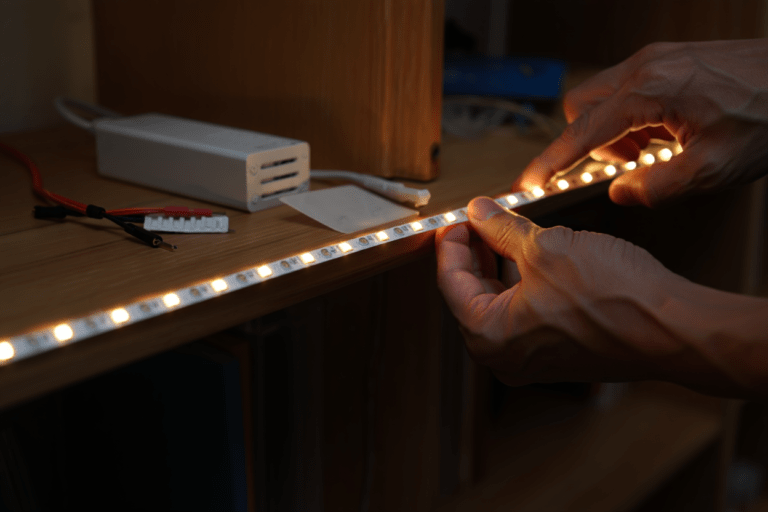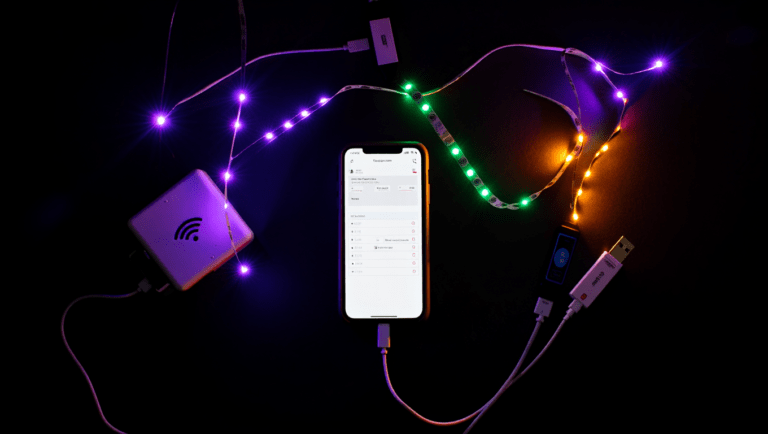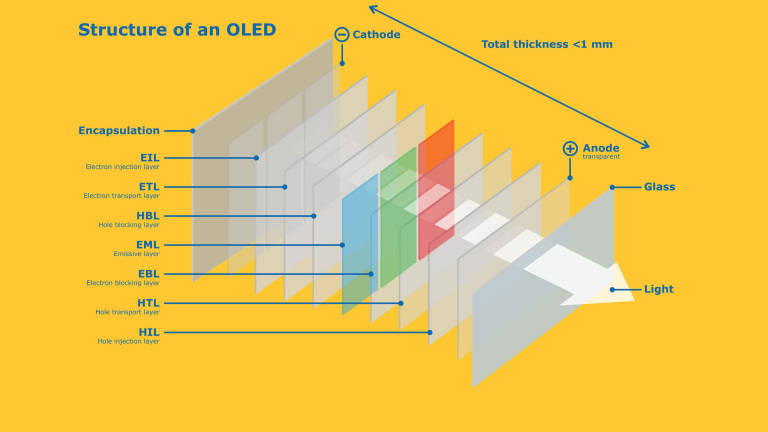The Importance of Emergency Lighting: Reasons Why It’s Crucial
Table of Contents
Have you ever experienced a sudden power cut that plunges you into total darkness? Or maybe you’ve been inside a large structure when the fire alarm starts ringing, and you don’t know where the closest exit is. These instances can be disconcerting and potentially hazardous, highlighting the need for emergency lighting.
Emergency lighting forms an integral part of a building’s safety protocols. It offers light when the standard power source fails, ensuring that occupants can exit the building safely. Additionally, it illuminates fire equipment and escape paths, reducing disarray and panic during emergency situations.
Let’s delve into the topic of emergency lighting and understand why it holds such importance.
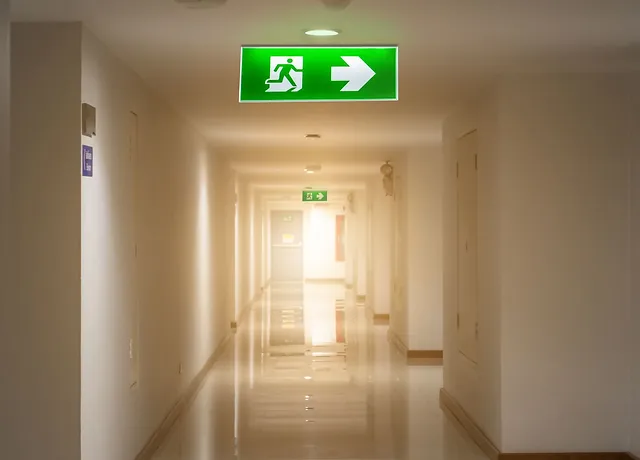
What Are the Various Types of Emergency Lighting?
Emergency lighting isn’t a one-size-fits-all approach. It comes in multiple forms, each designed to cater to specific needs and regulations.
- Maintained Emergency Lighting remains on at all times, functioning both as ordinary and emergency lighting. This is prevalent in theaters, cinemas, and similar places where abrupt darkness could incite panic.
- Non-Maintained Emergency Lighting turns on only when the main power supply fails. It is usually found in workplaces and other buildings where occupants are familiar with the layout.
- Sustained Emergency Lighting merges the two, utilizing one set of lights for daily use and another for emergency situations.
- Self-Contained Emergency Lighting incorporates all components within the light fitting, including the battery and control unit. It is straightforward to install and maintain, making it a favored choice for numerous buildings.
- Central Battery Source Emergency Lighting powers all the emergency lights in a building using a central battery. While installation can be more complicated, it provides benefits like easier maintenance and longer battery lifespan.
- Standby Lighting is another category of emergency lighting that provides illumination for normal activities during a power outage but doesn’t replace escape lighting.
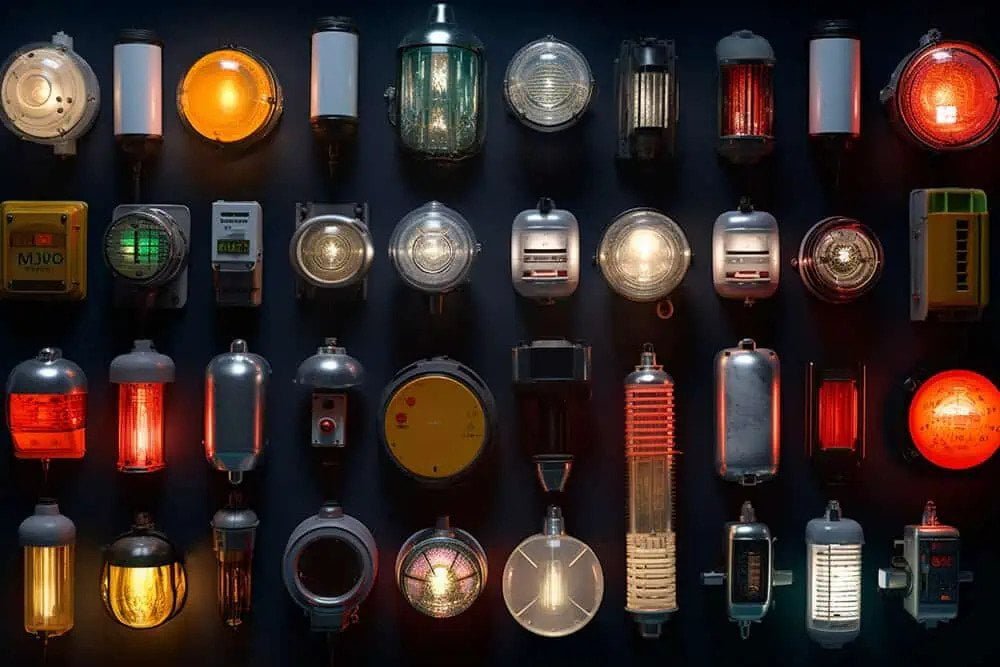
What Are the Subcategories of Emergency Lighting?
Emergency lighting has further classifications based on its purpose and placement.
- Emergency Escape Lighting illuminates safe exit paths for people trying to leave a location or halt a potentially dangerous process. It forms part of a building’s fire safety measures.
- Standby Lighting enables normal activities to continue during a power failure. However, it may not be classified as emergency lighting under some rules.
- Escape Route Lighting ensures escape paths are sufficiently lit, facilitating a safe and speedy exit from a building.
- Open Area Lighting, also known as anti-panic lighting, is designed to minimize panic when people gather, promoting an orderly evacuation.
- High-Risk Task Area Lighting provides illumination for critical tasks that must be completed before evacuation, ensuring the individual’s safety.
What Are the Components of Emergency Lighting?
Emergency lighting comprises several essential elements, like any other system.
- The Light Source, typically a lamp or LED, provides ample illumination and is the most conspicuous part of the system.
- The Power Supply feeds energy to the light source. In an emergency lighting system, it is usually a secondary power source distinct from the main building power.
- The Battery plays a pivotal role in an emergency lighting system. It stores energy when the primary power supply is working and releases this stored energy to the light source when the primary power fails. This ensures the emergency lights function during a power outage, offering vital illumination for a safe evacuation.
- The Control Unit oversees the operation of the emergency lighting system. It keeps track of the main power supply and switches to the battery power when it perceives a failure.
What Standards And Regulations Govern Emergency Lighting?
Emergency lighting must adhere to various standards and regulations to ensure its effectiveness and dependability.
- BS 5266-1 is a British Standard that provides guidelines for the design, installation, and wiring of emergency lighting systems. It encompasses areas such as luminaire performance, testing procedures, and documentation.
- The Regulatory Reform (Fire Safety) Order 2005 is a UK law that mandates building owners to guarantee occupant safety in case of fire, which includes providing suitable emergency lighting.
Several other relevant standards, both national and international, may apply depending on the location and type of building.
How Is Emergency Lighting Designed And Installed?
The design and installation of emergency lighting necessitate careful planning and deliberation.
- Design Considerations include the type and duration of lighting, the building’s size and use, and the presence of any specific risks. The aim is to ensure that all escape routes and safety equipment are sufficiently lit in an emergency.
- The Installation Process entails positioning the lights in suitable locations, connecting them to the power supply, and setting up the control unit. A certified electrician should perform all work to ensure safety and regulatory compliance.
- Locating Your Emergency Lights is a vital aspect of the installation process. Lights should be located near exits and fire equipment, along escape routes, and in large open spaces. They should also be situated to minimize shadows and glare.

Understanding the Importance of Planning for Emergency Lighting
Planning is an indispensable element in the effective installation of an emergency lighting system. The significance of planning is profound as it ensures adequate illumination in all essential areas, guiding individuals safely towards exits during a crisis.
The process of planning your emergency lighting installation encompasses assessing the building’s requirements, designing the system, choosing suitable lights, and strategizing their placement. Regular inspection and maintenance should also be embedded in the plan.
Approaches to Testing Emergency Lighting
To guarantee the correct operation of emergency lighting when needed, regular testing is imperative.
- The necessity for regular testing is embedded in the fact that emergency lighting is a safety-critical system. Any malfunction could endanger lives in an emergency situation.
- Typical testing procedures involve simulating a power outage to confirm the lights activate and offer sufficient illumination. The performance of the battery and the control unit’s operation should also be examined.
Maintaining compliance with regulations is another motive to perform regular testing. Keeping records of tests can validate compliance during inspections or audits.
Standards for Viewing Distances for Exit Signs
Exit signs are vital components of any emergency lighting system, guiding occupants to the closest exits during emergencies. For these to be effective, they need to be visibly legible from a distance.
As per the Occupational Safety and Health Administration (OSHA), each exit sign must be lit to a surface value of a minimum of five-foot candles (54 lux) by a reliable light source and should be distinctive in color. Self-luminous or electroluminescent signs with a minimum luminance surface value of at least .06 foot-lamberts (0.21 cd/m2) are acceptable.
Every exit sign must have the word “Exit” in easily readable letters of not less than six inches (15.2 cm) high, with the main strokes of the letters in the word “Exit” being no less than three-fourths of an inch (1.9 cm) wide.
If the route to the exit or exit discharge is not immediately evident, signs must be installed along the exit path indicating the direction to the nearest exit and exit discharge. Furthermore, an exit sign must always be visible within line-of-sight.
Different Power Supply Alternatives for Emergency Lighting
There are various ways to power emergency lighting systems, each offering its unique pros and cons.
- Self-Contained Systems incorporate all components, including the battery, within the light fitting. These are easy to install and maintain but may be more suited for larger buildings due to individual testing and maintenance requirements for each light.
- Central Battery Source Systems utilize a central battery to energize all emergency lights in a building. This simplifies testing and maintenance since the battery and control unit are located in one place. However, these systems are more intricate to install and may have a higher initial cost.
Understanding the Operational Modes of Emergency Lighting
The operational mode of emergency lighting refers to its function during a power outage.
- Maintained emergency lights are always on, serving both as regular and emergency lighting. These are commonly utilized in areas where sudden darkness could incite panic.
- Non-Maintained emergency lights become operational only when the primary power supply fails. They are typically used in workplaces where occupants are familiar with the layout.
- Combined Emergency Luminaires are a type of maintained emergency light that incorporates two or more lamps. One lamp operates on the primary power supply, while the other(s) work on the emergency power supply.
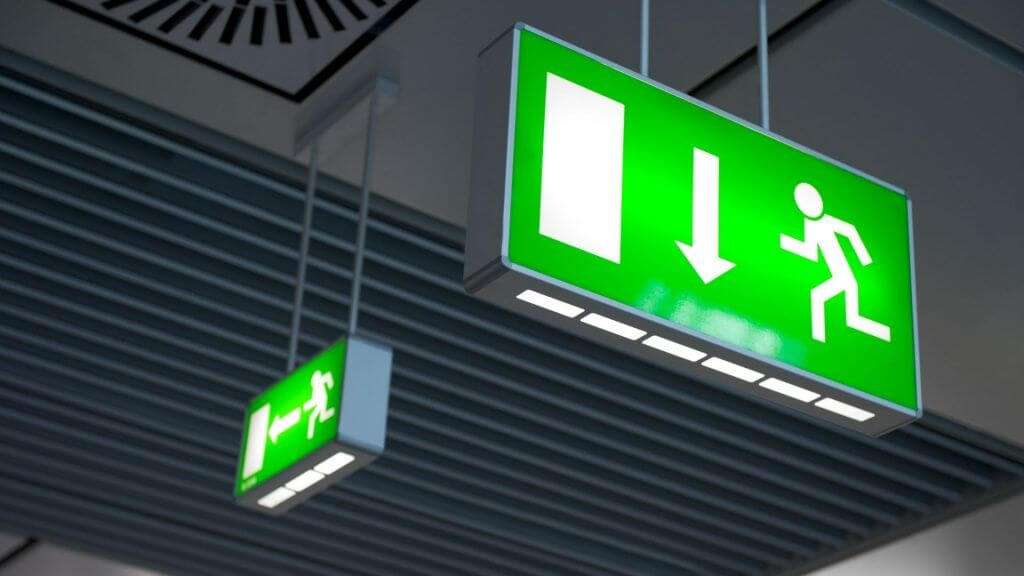
Exploring the Various Features of Emergency Lighting Systems
Emergency lighting systems incorporate numerous features and functions. Here’s a breakdown of these:
- A Luminaire with an Inbuilt Test Device can be tested independently, streamlining maintenance and guaranteeing operational readiness.
- A Luminaire with a Remote Test Device offers the convenience of remote testing – a useful feature for larger premises with numerous lights.
- A Luminaire with an Inhibiting Mode provides the option to temporarily deactivate it during brief power interruptions or maintenance.
- A High-Risk Task Luminaire lights up safety-critical tasks to be completed before evacuation, ensuring the safety of those involved.
Understanding Emergency Lighting Duration
Emergency lighting duration pertains to how long the lights can remain on during a power outage. This duration depends on battery capacity and the power consumption of the lights.
- The importance of duration: the lights must remain on long enough to ensure safe evacuation. In some instances, lights may need to stay on longer for safety-critical tasks to be completed.
- Duration standards depend on the building type and its function, but generally, lights should be capable of operating for at least three hours post power failure.
Deciphering Emergency Lighting System Classifications
Emergency lighting systems are categorized based on their operational mode, duration, and other characteristics. These classifications are typically indicated by a code on the light fitting.
Comprehending these Classification Codes helps in selecting suitable lights that meet regulatory compliance. An example of a Classification Code is “M3,” denoting a maintained light with a three-hour duration, and “NM3,” for a non-maintained light with a similar duration.
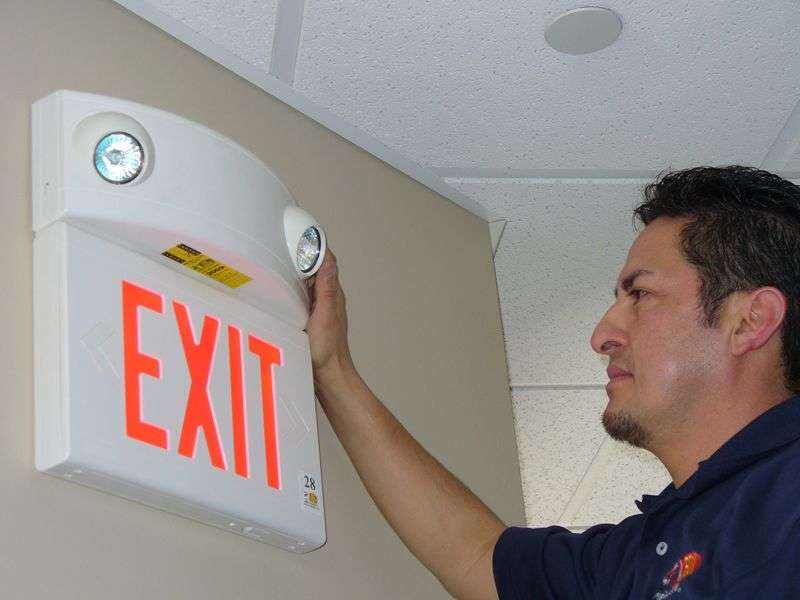
Determining the Placement of Luminaires and Emergency Signs
The strategic placement of luminaires and emergency signs significantly impacts the effectiveness of an emergency lighting system.
- The value of correct positioning is immense as lights and signs should be easily visible and provide sufficient illumination.
- Siting guidelines suggest placing lights near exits and along escape routes, above firefighting equipment, and in expansive open areas. Signs should be unobstructed and visible from all directions.
Quantifying the Required Illumination from an Emergency Lighting System
The required illumination from an emergency lighting system depends on various factors, including the building’s size and layout, its purpose, and specific regulatory requirements. Illumination standards usually define a minimum illumination level for different areas, like escape routes and safety equipment. These standards ensure safe navigation during emergencies. Several factors influence the Required Illumination, including the complexity and size of escape routes, presence of hazards, and expected number of occupants.
Understanding the Significance of Commissioning Certificate and Logbook for Emergency Lighting
A commissioning certificate and logbook are fundamental documents for any emergency lighting system. The role of these documents is pivotal in proving regulatory compliance and facilitating maintenance and testing. Essential Documentation includes system design and installation details, initial and periodic test results, and maintenance and repair records.
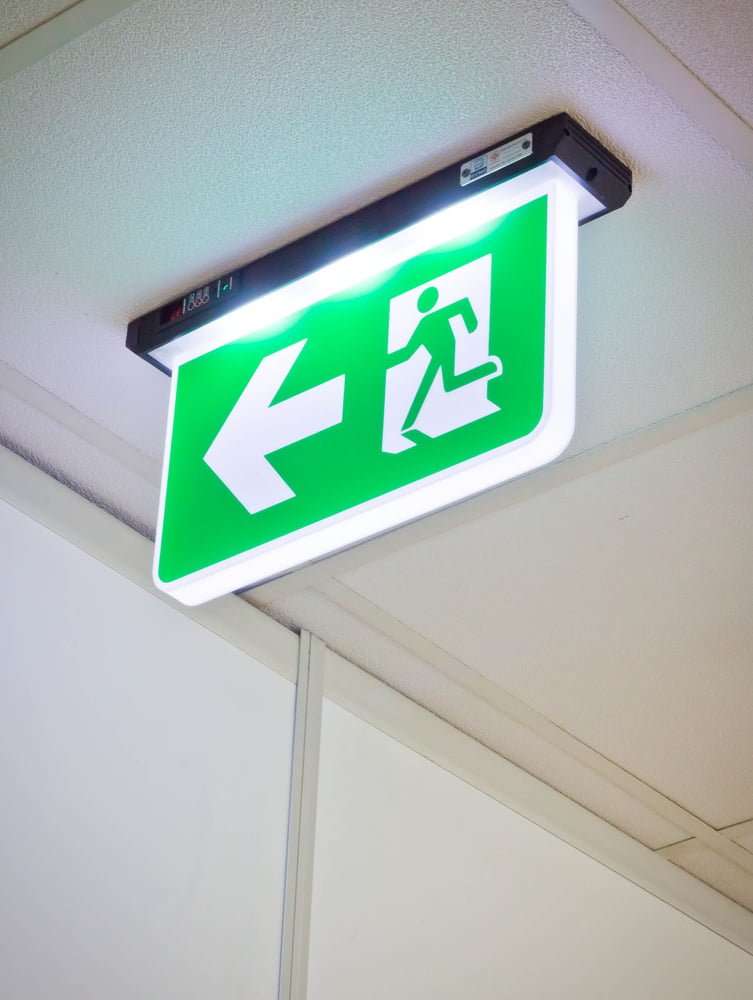
The Maintenance Aspect of Emergency Lighting
The upkeep of emergency lighting is vital for building safety. Regular maintenance guarantees the system’s readiness and reliability during emergencies.
Regular upkeep is crucial: an ill-maintained system may fail during an emergency, endangering lives.
Emergency lighting system maintenance usually includes:
- Regular Testing: Simulating a power failure to confirm lights function as expected and offer adequate illumination. The battery performance should also be checked.
- Cleaning of Light Fittings: Regular cleaning prevents dust and dirt accumulation, ensuring maximum possible illumination.
- Replacement of Faulty Components: Faulty or aging components should be promptly replaced to avoid failures. This includes the light source (lamp or LED), battery, and control unit parts.
- Record Keeping: A competent person should carry out all maintenance work and record it in the system logbook, ensuring accountability and maintaining a record of the system’s upkeep history.
It’s also crucial to frequently review the system’s design and configuration, particularly if the building’s usage or layout changes. This ensures the system remains effective and meets the building’s requirements.
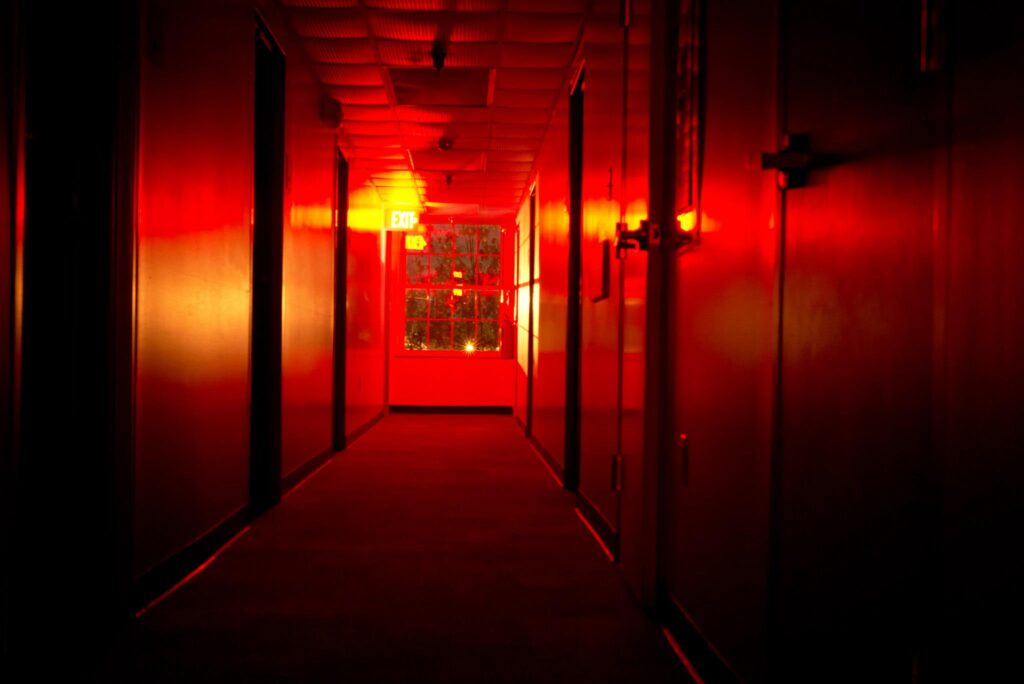
What Does Servicing and Testing of Emergency Lighting Entail?
Servicing and testing form integral parts of maintaining an emergency lighting system.
- Regular servicing and testing are crucial to ensure system functionality during emergencies. Regular servicing can also extend the system’s lifespan and reduce sudden failure risks.
- Servicing and testing procedures usually involve verifying the operation of lights and control unit, testing the battery, and inspecting light fittings and wiring. Any faults should be rectified, and components replaced as required.
Final Thoughts
Emergency lighting plays an essential role in any building, providing crucial illumination during power failures or emergencies. It ensures clear visibility of escape routes and enables safe evacuation of occupants. With careful design, correct installation, regular testing, and adherence to regulations, these systems serve as reliable safety measures. As technology advances, we can look forward to more effective and dependable solutions in the field of emergency lighting.
FAQs
Emergency lighting should be installed in areas where visibility is essential during an emergency, such as hallways, stairways, emergency exits, and areas with high foot traffic. It should also be placed near fire extinguishers, first aid stations, and electrical panels.
The duration of emergency lighting depends on the type and model of the system. Most emergency lights are designed to last between 1 to 3 hours on battery power, providing enough time for people to safely exit the building or wait for further assistance.
Yes, emergency lighting plays a vital role in preventing accidents during power outages. It ensures that people can see obstacles, navigate safely, and avoid potential hazards like tripping, falling, or getting lost in the dark.
Yes, emergency lighting is often required by building codes and safety regulations. Local laws may vary, but most commercial buildings, public spaces, and workplaces must have emergency lighting installed to ensure the safety of occupants.
Emergency lighting systems require regular maintenance to ensure they function properly. This includes testing the lights periodically, checking the batteries, cleaning the fixtures, and replacing any faulty parts or outdated systems.

Hi, I’m Xylia Xiong, a sales professional with 14 years of experience in the LED strip light industry. I specialize in providing tailored solutions, leveraging my expertise in LED products and the latest industry trends. Known for effective communication and problem-solving, I’m dedicated to helping lighting manufacturers, importers, and distributors achieve their goals.
Let’s work together to create customized solutions that exceed expectations.
Related Posts

- Call Us: +86-15920391130
- Email: info@mylikeled.com
- Office Address: No. 4 Keying road, Beitai road, Baiyun district, Guangzhou, China
- Factory: Building 12, Liandong U Valley, Guangqing Industrial Park, Shijiao Town, Qingcheng District, Qingyuan City, Guangdong, China
Copyright © 2025 – My Like Led All rights reserved.

